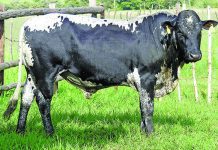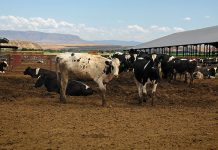Vets call it a “pre-purchase certificate” – a soundness certificate is like a roadworthy for horses. After spending a lot of money on a new horse, the last thing you need is for it to sit in a stable consuming expensive hay and concentrate because it can’t be ridden.
A pre-purchase certificate is a legal document, signed by a registered veterinarian, which certifies that a full examination of an identified horse has taken place on a specified date. Buyers should also pay for the certificate, to ensure the certifying vet is working in your interest, which is to buy a horse suitable for its intended use. You should, of course, also choose a vet who regularly sees a lot of horses rather than one whose main interest is dogs and cats.
Once you’ve contacted the vet and made an appointment for them to visit the horse, it’s a good idea to tag along and watch what’s being done. The British Equine Veterinary association describes five stages for a pre-purchase examination.
First, the horse is examined in the stable to see if it shows any vices like crib-biting or weaving, kicking or refusing to be handled. At this stage the vet will also listen to the heart and lungs, palpate the head, neck, body and tail and feel along the legs. The joints will be gently manipulated and flexed to see if they move freely. This shouldn’t be done by an amateur as it can damage the ligaments if done roughly, leading to temporary or even permanent lameness. The teeth will also be examined to confirm the horse’s age – it’s not uncommon to find it’s several years older, or even younger, than the seller claims.
To substantiate the horse’s identity and history and fill in the certificate properly, the vet will need copies of its passport or registration forms, the number of its DNA test or identity chip and a vaccination certificate. If the owner vaccinated the horse, the vet may need to redo the vaccines so they can be certified. This is particularly important for equine influenza and tetanus vaccinations, which sellers may claim have been done.
The second stage is examining the horse while it’s moving. It’s taken out of the stable to a level, hard surface and first walked and then trotted out. The vet will look at the movement from the front, back and both sides, checking for any irregularity or lameness. The person who leads the horse should keep it on a long, loose, lead, so that their movement doesn’t cause what is known as “bridle lameness” – an unevenness in the pace caused by the handler hanging to tightly onto the lead-rope or reins.
At the third stage the horse is exercised strenuously. This is often done on the lunge, but for a riding horse it can also be done under saddle. Depending on fitness, the horse should be worked for at least 10 to 20 minutes at a work and trot on the circle. If it’s being ridden, saddling, bridling and mounting procedure is also observed – horses with sore backs, withers or necks will often flinch as the riders mount.
The vet notes whether any stiffness is seen when the horse moves around corners in both directions. A jumper should also be worked over jumps. Directly after exercise, the veterinarian will listen for any abnormal breathing and check the heart rate.
At the fourth stage the horse is returned to its stable and allowed to rest for 10 minutes, after which the heart and respiration rate should have nearly returned to the resting rate. Stiffness or lameness are also re-checked and the horse is once again trotted out gently.
During the fifth stage, the vet can use a hoof tester and may suggest further tests be done. For more expensive horses these usually include X-rays (especially of the lower legs, to eliminate ringbone), endoscopy (to check for stomach ulcers or sinus abnormalities) and blood tests for diseases such as dourine. If your vet suspects the seller has given a pain-killer to mask lameness, or a tranquilliser, he may suggest a blood test to check for pharmacological substances. If you’re buying a stallion or mare for breeding, it is essential to test for fertility and contagious venereal diseases.
You can ask the vet if he thinks that the horse is suitable, but you may not get a specific answer – this isn’t something that can be scientifically verified. In general, however, a vet will give his unofficial opinion. For example, an old schoolmaster with legs that aren’t perfectly sound might still be a better mount for a junior wanting to jump than a four-year-old, sound but inexperienced horse with a lot of potential.
Soundness certificates
Vets call it a “pre-purchase certificate” – a soundness certificate is like a roadworthy for horses. After spending a lot of money on a new horse, the last thing you need is for it to sit in a stable consuming expensive hay and concentrate because it can’t be ridden.
A pre-purchase certificate is a legal document, signed by a registered veterinarian, which certifies that a full examination of an identified horse has taken place.
Issue date: 9 January 2009







